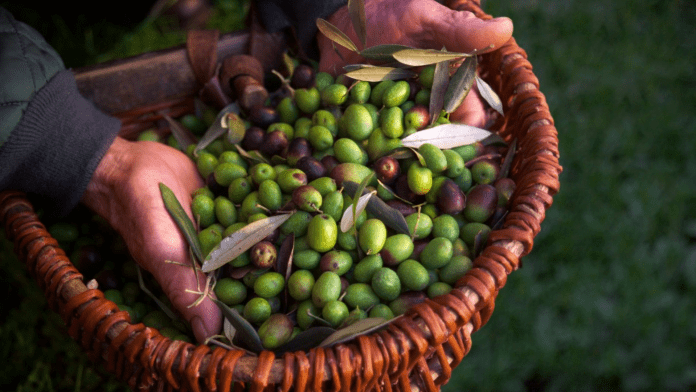In today’s food industry, there has been a significant increase in the demand for fresh, locally sourced ingredients. With this trend, many food businesses are now implementing a farm-to-fresh model to provide consumers with high-quality, fresh produce that is sourced directly from local farmers.
A farm-to-fresh model is an approach that focuses on sourcing raw materials directly from farmers or growers and delivering fresh and locally-sourced products to consumers. The model is designed to eliminate intermediaries and shorten the supply chain, thereby ensuring the freshest produce and reducing costs for both farmers and consumers. This model is becoming increasingly popular as consumers are becoming more interested in the source and quality of their food.
Efficiently sourcing raw materials for a farm-to-fresh model enables a business to find high-quality, fresh ingredients from reliable suppliers while ensuring cost-effectiveness and sustainability. It involves establishing strong relationships with suppliers, implementing quality control measures, and optimizing the supply chain to ensure that the ingredients are delivered in a timely and efficient manner.
This process also involves ensuring that the raw materials are grown and sourced in an environmentally responsible and socially conscious way. Ultimately, the goal is to provide customers with fresh, high-quality ingredients while supporting local farmers and businesses.
Efficient sourcing of raw materials is crucial for any farm-to-fresh business model. Here are some reasons why:
1. Consistency in quality: When raw materials are sourced efficiently, it ensures that the same quality of ingredients is obtained every time. This consistency in quality is vital for maintaining customer satisfaction.
2. Cost-effectiveness: Sourcing raw materials efficiently helps in reducing the overall cost of production. When the right quality of raw materials is procured at the right price, it helps in minimizing wastage and maximizing profits.
3. Sustainability: An efficient sourcing process can help in promoting sustainable farming practices. When businesses procure raw materials from sustainable sources, they are contributing to the overall health of the environment, which is crucial in the long run.
4. Brand reputation: Efficient sourcing of raw materials helps in building a strong brand reputation. When customers are aware that a business procures its raw materials from sustainable and ethical sources, it enhances the brand’s image in their minds.
5. Flexibility: Efficient sourcing allows businesses to respond quickly to changing market demands. When raw materials are procured from multiple sources, it provides the flexibility to switch suppliers if needed.
Efficient sourcing of raw materials not only helps in maintaining consistency in quality and reducing costs but also promotes sustainable and ethical farming practices, enhances brand reputation, and provides flexibility in responding to market demands.
Here is our quick 5-Step guide to efficiently source raw materials for your farm-to-fresh model and keep your narrative sustain in operations.
1. Build relationships with local farmers
Building relationships with local farmers is essential when sourcing raw materials for your farm-to-fresh model. Start by identifying local farmers in your area who grow the produce you need. Attend farmers’ markets, join local farming associations, and attend community events to meet farmers and get to know them.
By building relationships with local farmers, you can establish trust and develop long-term partnerships. Farmers are more likely to work with businesses that they know and trust, which can lead to a more reliable and consistent supply of raw materials.
2. Plan and order in advance
Planning and ordering in advance is critical when sourcing raw materials for your farm-to-fresh model. Unlike traditional supply chains, where materials are readily available on demand, local farmers may have limited quantities of produce available at specific times of the year.
By planning and ordering in advance, you can ensure that you have a reliable supply of raw materials throughout the year. This can also help farmers to plan their planting and harvesting schedules, allowing them to grow and harvest crops that meet your specific requirements.
3. Use technology to streamline the ordering process
Using technology can help streamline the ordering process when sourcing raw materials for your farm-to-fresh model. Online ordering platforms can make it easy to place orders, track inventory, and communicate with farmers.
There are also many mobile apps available that connect farmers with buyers, allowing businesses to source raw materials directly from local farmers.
4. Consider diversifying your sources
Diversifying your sources is essential when sourcing raw materials for your farm-to-fresh model. While building relationships with local farmers is critical, it’s also important to have backup suppliers in case of crop failures or other disruptions.
Consider working with multiple farmers and suppliers to ensure a consistent supply of high-quality raw materials. This can also help to mitigate risks and ensure that your business can meet demand even during peak seasons.
5. Ensure compliance with regulations and standards
When sourcing raw materials for your farm-to-fresh model, it’s essential to ensure compliance with regulations and standards. This includes adhering to food safety regulations, as well as ensuring that all raw materials are grown and harvested in an environmentally sustainable manner.
It’s important to work with suppliers who share your values and commitment to sustainability. This helps ensure that your business is not only providing high-quality, fresh produce but also contributing to a more sustainable food system. Keep in mind that efficient sourcing is an ongoing process, and it requires continuous evaluation and adaptation to ensure that your business remains competitive in the market.





